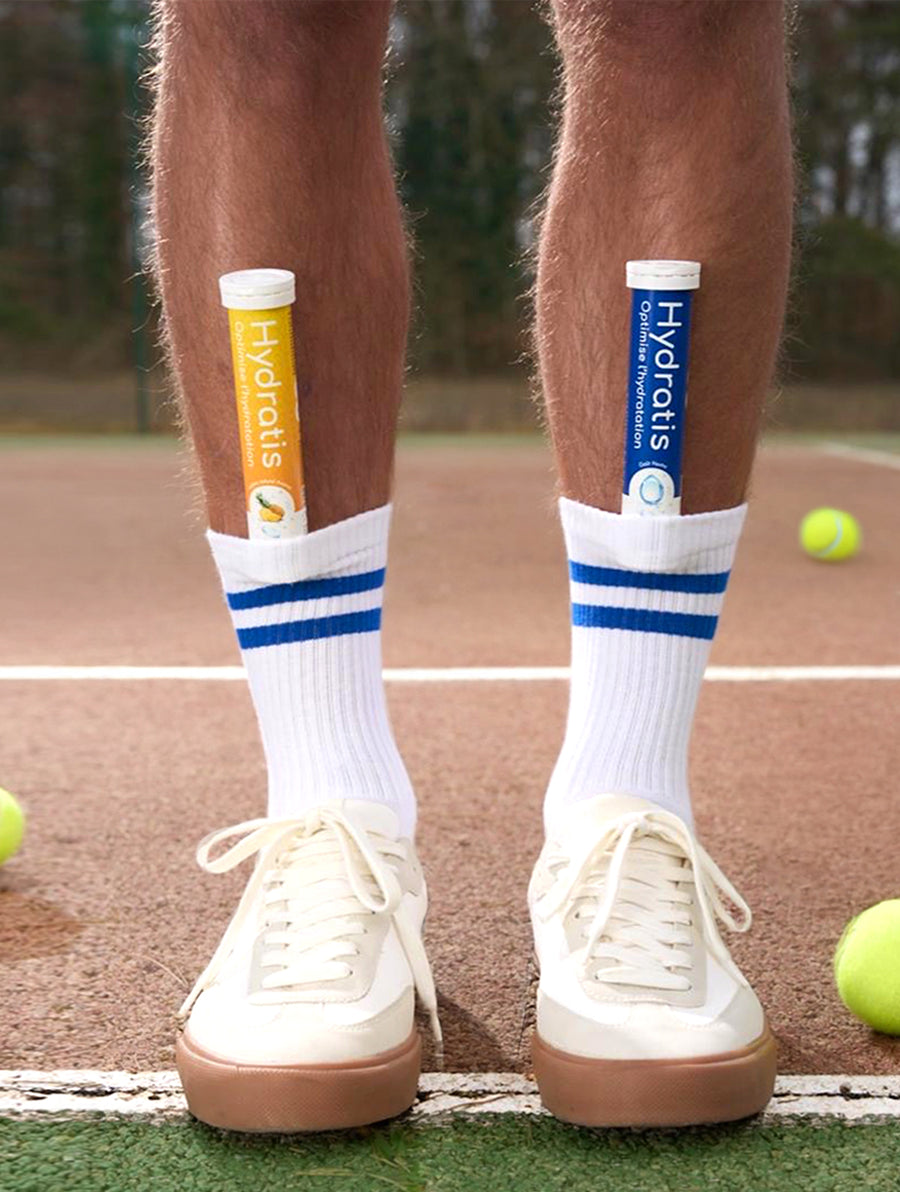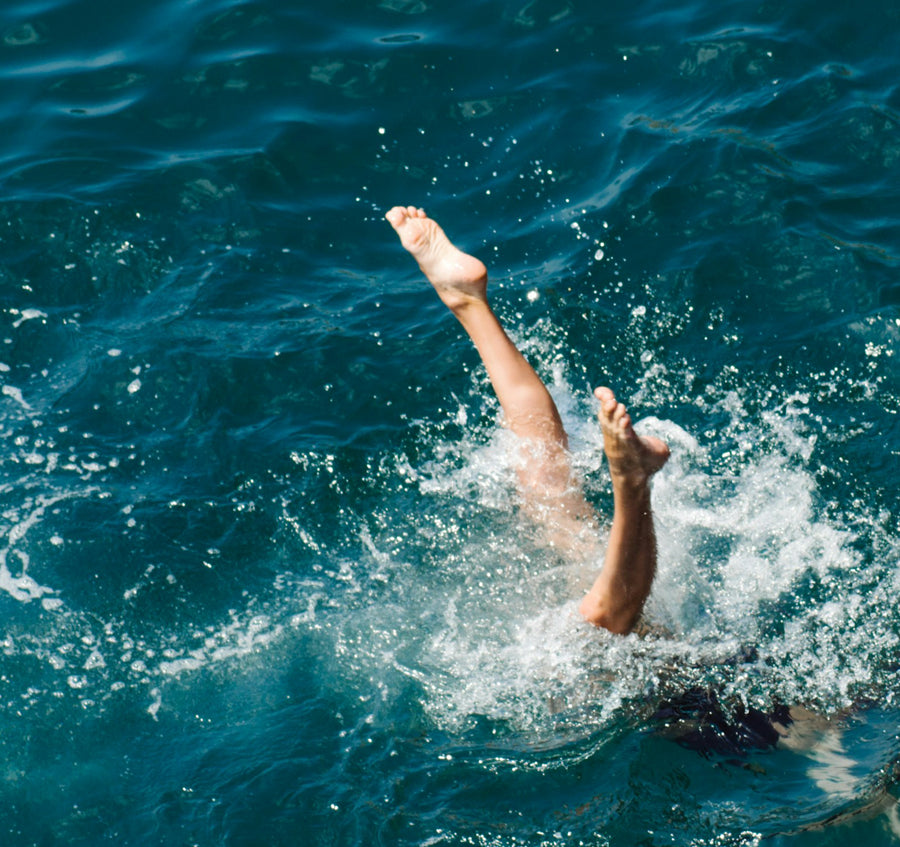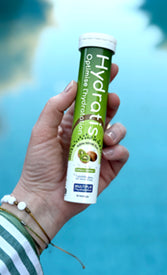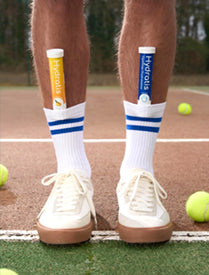With the arrival of warmer weather, children spend more time outdoors and are exposed to the sun. While these moments are precious for their development and well-being, they also carry risks, particularly that of heatstroke . Unlike adults, children are more vulnerable to heat due to physiological differences specific to their age. Knowing how to recognize the early signs, adopting the right preventative measures, and intervening quickly is essential to avoid potentially serious complications. We will guide you to better understand heatstroke in children and how to protect young children from the sun during the summer months.
Why are children more at risk of heatstroke?
A child's body does not react to heat in the same way as an adult's. Several physiological and behavioral factors explain this increased vulnerability to high temperatures.
On the one hand, children's thermoregulation system is still immature. This means their bodies have more difficulty maintaining a stable internal temperature in hot weather. Their sweat production, the main natural cooling mechanism, is also reduced compared to that of adults, which limits the dissipation of body heat.
On the other hand, children are less aware of the sensation of thirst and may not express their needs. When they play, they are often so absorbed that they forget to drink or seek shade. Furthermore, they don't always know how to adapt their behavior to the weather conditions (dressing up, resting, avoiding direct sunlight, etc.).
Thus, the youngest children depend entirely on the vigilance of adults to ensure their hydration , reasonable exposure to the sun and their comfort during the summer period.
Sunstroke, heatstroke, dehydration: what are the differences?
These three terms are often confused, yet they refer to very distinct situations. Their differences are essential for adapting the response to symptoms in children.
|
Term |
Definition |
Causes |
Possible symptoms |
|
Sunstroke |
The body's inability to properly regulate its temperature following prolonged exposure to the sun |
Direct and prolonged exposure to the sun, especially to the head |
Headaches, feeling of heat, redness, thirst, fatigue |
|
Heat stroke |
Severe hyperthermia with neurological impairment, body temperature > 40°C |
Excessive ambient heat (e.g., heatwave, poorly ventilated room, closed car) |
High fever, vomiting, altered mental status, drowsiness |
|
Dehydration |
Excessive loss of water and mineral salts, not compensated |
Vomiting, diarrhea, excessive sweating, insufficient fluid intake |
Dark urine, dry mouth, fatigue, dizziness |
Sunstroke is often the first stage , which can progress to heatstroke if no action is taken. Dehydration can occur in conjunction with both conditions, worsening the clinical picture.
How to recognize the onset of heatstroke in a child?

Early symptoms to watch for
Heatstroke in children doesn't always begin suddenly. The first signs are sometimes subtle, but should raise concern:
- Redness on the face,
- Body temperature having increased slightly,
- Headaches or complaints of discomfort,
- Sudden fatigue ,
-
Unusual thirst .
As soon as these symptoms appear, it is important to act quickly: put the child in the shade, offer them small amounts of fresh water, remove any unnecessary clothing and encourage rest .
Signs of severity: when to consult a doctor?
Certain clinical manifestations indicate a potential progression towards heatstroke, which requires immediate medical attention:
- Temperature above 40°C,
- Vomiting,
- Drowsiness, apathy, loss of alertness,
- Severe headaches ,
- Unusual behavior, confusion,
-
Convulsions (in the most severe cases).
In this case, it is imperative to contact the SAMU (15) or consult a healthcare professional without delay.
Hydration and dehydration in children: what you need to know
Why is the child more vulnerable?
Children's bodies contain a proportionally higher proportion of water than adults'. This makes them more susceptible to fluid loss , particularly through perspiration. During periods of intense heat or strenuous physical activity, their bodies lose water more rapidly, thus increasing the risk of dehydration .
Another important point: their thirst doesn't always reflect their actual need. That's why it's essential to offer them water regularly, even if they don't spontaneously ask for it.
How much water should a child be given per day in summer?
Recommendations vary depending on age:
- 2 to 3 years : approximately 1 liter of water per day,
- 4 to 8 years : approximately 1.2 liters per day,
-
9 to 13 years : between 1.5 and 1.7 liters per day.
These figures are for healthy children in temperate climates. In hot weather, during physical activity, or with a fever, their needs can increase significantly!
And what about in case of vomiting or diarrhea?
In these situations, the use of oral rehydration solutions (ORS), available in pharmacies, is recommended. These solutions contain an optimal balance of water, glucose, and electrolytes, facilitating rapid and safe rehydration.
How to prevent heatstroke in children?
Good habits to adopt on a daily basis
Prevention relies on a few simple but effective habits :
- Avoid all direct exposure to the sun between 12pm and 4pm , the period when the rays are most intense.
- Favor outdoor activities in the morning or late afternoon.
-
Protect the child with:
- a wide-brimmed hat
- suitable sunglasses,
- an SPF 50 sunscreen, reapplied every 2 hours,
-
loose-fitting, lightweight, and light-colored clothing.
- Keep the child hydrated regularly , even if they do not complain of being thirsty.
- Ventilate your home early in the morning and in the evening, and close the shutters during the day to keep the rooms cool.
-
Never leave a child alone in a car , even for a few minutes: the interior temperature can reach over 50°C in less than 10 minutes.
In daycare or leisure center: what precautions should be taken?
Care facilities also have a role to play in prevention. They must:
- Offer activities in the shade or indoors during the hottest hours,
- Provide easily accessible water points ,
- Encourage children to drink regularly,
-
Adjust clothing and monitor for signs of overheating.
What should you do if a child suffers from heatstroke?

Immediate care
If sunstroke is suspected:
-
Place the child in a shaded and well-ventilated area .
- Remove unnecessary clothing to facilitate heat dissipation.
-
Apply compresses or a damp cloth to the forehead , neck, and arms.
-
Give him small amounts of fresh water to drink regularly.
-
Offer him complete rest , lying down if necessary.
When does one recover from sunstroke?
If the heatstroke is mild and the right actions are taken quickly, improvement usually occurs within a few hours. However, it is necessary to continue monitoring the child for 24 hours.
When should you consult a doctor?
Medical advice is essential if:
- The fever persists or exceeds 40°C,
- The child exhibits an altered state of consciousness,
- Vomiting or seizures occur,
-
The symptoms do not subside despite initial treatment.
Conclusion: a peaceful summer for you and your child
Heatstroke in children remains a preventable health problem if the right precautions are taken. With proper hydration, rigorous sun protection, and close supervision , you can reduce the risk of heat-related incidents. Adult vigilance is essential, as children are not always able to perceive or express their needs. By following these simple tips, you can allow your child to enjoy the joys of summer safely.
Frequently Asked Questions (FAQ)
How to recognize heatstroke in a child?
A body temperature above 40°C, neurological disorders (confusion, drowsiness), headaches, nausea, or vomiting constitute a medical emergency.
How to recover quickly from sunstroke?
Keep the child cool, rehydrate them regularly, and monitor their condition. If symptoms persist or worsen, medical attention is essential.
Can sunstroke be serious?
Yes, especially if it progresses to heatstroke or is accompanied by severe dehydration. Hence the importance of prevention and recognizing its signs quickly.
Bibliography
Smith, C.J. (2019). Pediatric Thermoregulation: Considerations in the Face of Global Climate Change. Nutrients , 11(9), 2010. https://doi.org/10.3390/nu11092010
Krishna, S., Kim, R., Pochtar, E., & Papaioannou, H. (2024). Heat-related illness and sun safety strategies for pediatric populations. Current Opinion in Pediatrics , 36(6), 702–709. https://doi.org/10.1097/MOP.0000000000001382
Bytomski, J.R., & Squire, D.L. (2003). Heat illness in children. Current Sports Medicine Reports , 2(6), 320–324. https://doi.org/10.1249/00149619-200312000-00007
Forsyth, N., & Solan, T. (2022). Heat stroke in children and young people for pediatric clinicians. Pediatrics and Child Health , 32(12). https://doi.org/10.1016/j.paed.2022.10.004
Hoffman, J. L. (2001). Heat-related illness in children. Clinical Pediatric Emergency Medicine , 2(3), 203–210. https://doi.org/10.1016/S1522-8401(01)90006-0
Principi, N., Campana, BR, Argentiero, A., Fainardi, V., & Esposito, S. (2025). The Influence of Heat on Pediatric and Perinatal Health: Risks, Evidence, and Future Directions. Journal of Clinical Medicine , 14(4), 1123. https://doi.org/10.3390/jcm14041123
Health Insurance. (2024). Heatwave-related illnesses . https://www.ameli.fr/assure/sante/themes/canicule-chaleur/maladies-liees-canicule
EFSA Panel on Dietetic Products, Nutrition and Allergies (NDA). (2010). Scientific Opinion on Dietary Reference Values for Water. EFSA Journal , 8(3), 1459. https://doi.org/10.2903/j.efsa.2010.1459






